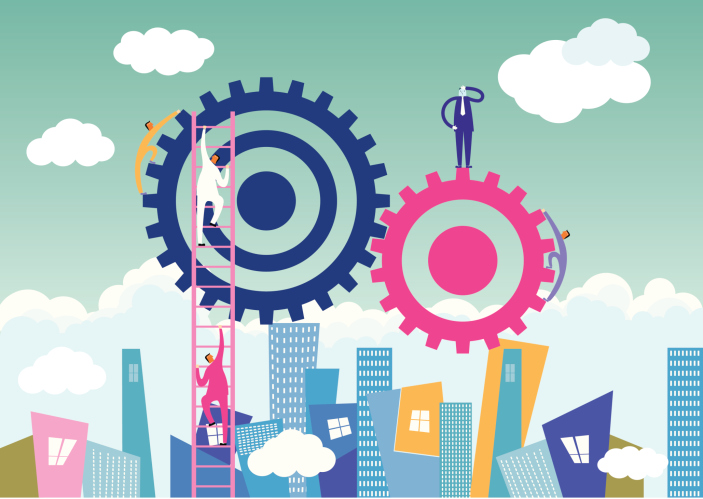
A smart citizen builds a smart city
Energy 23 November 2015Smart Cities is a largely abused concept, but examples of Smart Cities vary in size and type. The idea is still relatively new and evolving, and the concept is very wide-ranging. Broadly speaking a smart city is intelligent, interconnected, and efficient. Every city is unique, with its own historical development path, current characteristics and future dynamic.
The cities labelled as such vary enormously. A Smart City is shaped by a complex mix of technologies, social and economic factors, governance arrangements, funding, policies, business drivers. Smart Cities are about leveraging interoperability within and across policy domains of the city (e.g. transportation, public safety, energy, education, healthcare, and development). Smart City strategies require innovative ways of interacting with stakeholders, managing resources and providing services.
A common factor for all smart cities is the use of ICTs to optimize the efficiency and effectiveness of standard city processes, such as public transportation, municipal offices, sanitary services, local taxes, touristic spots, postal services, etc. ICTs serve to create a smooth and efficient link resulting in a process optimization. The interactive intelligent system is the requisite for a city to be smart. In a sense, a Smart City does not exist without technologies (especially ICT) that improve a city’s competitiveness, as well as ensure a more sustainable future, across networks of people, businesses, technologies, infrastructures, consumption, energy and spaces. ICT for Smart Cities is not just a matter of technology-led networking. It is true that such networking allows for crucial communications. However, there are other features beyond networking. Indeed, technology serves for: gathering, analysing and distributing data about the city to optimise efficiency and effectiveness in the pursuit of competitiveness and sustainability; communicating and sharing such data and information around the city using common definitions and standards so it can be easily re-used; acting multi-functionally, providing solutions to multiple problems.
Overall, ICT enables a Smart City to: make data, information, people and organisations smart, redesign the relationships between government, private sector, non-profits, communities and citizens; ensure there are synergies and interoperability within and across-city policy domains and systems (e.g. transportation, energy, education, health and care, utilities, etc.); drive innovation, for example through so-called open data, ‘hackers marathons’, living labs and tech hubs.
While ICT is a definitive component, Smart Cities cannot simply be created by deploying sensors, networks and analytics in an attempt to improve efficiency. Indeed, at worst, this can lead to a one-size fits all, top-down approach to sustainability and economic development.
Another popular aspect of Smart Cities is their green attitude. Smart Cities combine diverse technologies to reduce their environmental impact and offer citizens better lives. This is not, however, simply a technical challenge. Organisational change in governments – and indeed society at large – is just as essential. Making a city smart is therefore a very multi-disciplinary challenge, bringing together city officials, innovative suppliers, national and EU policymakers, academics and civil society. Cities represent three quarters of energy consumption and 80% of CO2 emissions worldwide. That’s the largest of any environmental policy challenge. As we know, urbanisation is only set to increase, cities house half the world’s population today but are set to host three quarters in 2050. To cope with this continued urban growth we will need to find new ways to manage cities and make them more effective. The convergence between digital technology and the world of energy will pave the way for a new ecosystem of services that will enable both a better quality of life and reduced energy consumption.
In Japan, cooperation between government and industry, involving large Japanese conglomerations (such as Sumitomo and Mitsubishi Electric) has been leveraged to support smart city initiatives focusing on increasing the quality of life of citizens through green ICTs and smart grids. In short, such a strategy focuses on the city as a single entity, rather than the people and citizens that bring it to life. Any adequate model for the Smart City must therefore also focus on the Smartness of its citizens and communities and on their well-being and quality of life.
In so doing, it can encourage the processes that make cities important to people and which might well sustain very different – sometimes conflicting – activities. Thus, the ‘Smartness’ of Smart Cities will not only be driven by orders coming from unseen and remote central government computers which try to predict and guide the population’s actions from afar. Smart Cities will be smart because their citizens have found new ways to craft, interlink and make sense of their own data and information, changing the behavior of people and organisations.
Nonetheless, a technologically advanced and green city cannot be labeled as smart unless it invests in human and social capital. Sustainable economic growth, wellness and high quality of life is the first step towards a smart attitude.





